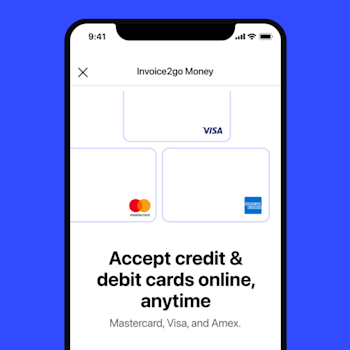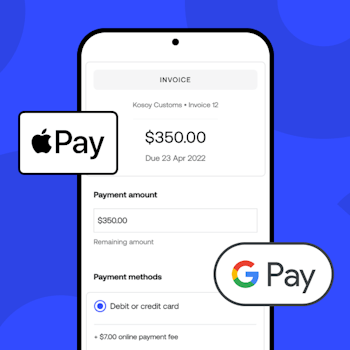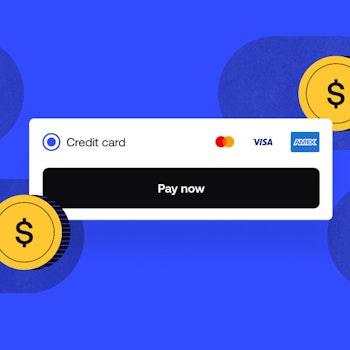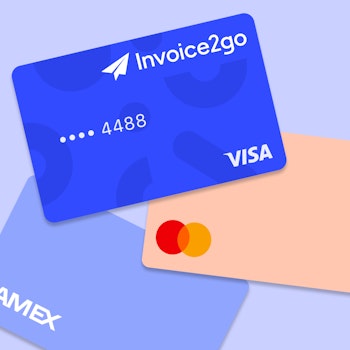
How to start freelancing on the side: a 10-step checklist for 2021
Have you been wondering how to start freelancing? If so, you’re not alone. In the past year, 59 million Americans freelanced in the US, representing almost 40% of the entire workforce.
Having a conventional job isn’t a bad thing, but as we’ve learned in the months since March 2020, anything can happen. You can’t count on anything to stay the same. And while that might look like an invitation to adventure for some, not everyone is prepared to pivot their entire lives and livelihoods to be their own boss.
If you were one of the tens of millions of people who found themselves either suddenly out of a job or forced to adapt to a whole new kind of work, you might have given some serious thought to branching out on your own—and we wouldn’t blame you. Self-reliance is an incredible thing.
Even though it might take a little time to get some momentum, it’s certainly worthwhile if it frees you from worrying about things you have no control over—and as we can all agree, there’s way too much of that going on.
It’s our mission at Invoice2go, a Bill.com company, to empower freelancers and small business owners. So today, we’re going to talk about starting a freelance business. We’ll start by talking about why you should do it, and then we’ll provide a 10-step checklist on how to make it happen.
The top reasons to start freelancing in 2021 – even if you have a full-time job
Let’s begin by exploring why it’s a good idea to create a freelance business in 2021—even if you currently have a full-time job. Starting while you still have a job is actually a perfect idea. It lessens the urgency to become profitable quickly, and you’ll have the time to try out a few different strategies before you jump in with both feet.
When you’re still working full-time, your freelance work is what we call a side-hustle. However, just because it’s not your main source of income doesn’t mean it won’t become that. Many side-hustles have blossomed into highly lucrative and satisfying careers, and yours can too. And even if it doesn’t, you’ll learn valuable skills along the way that will serve you well for a long time to come.
Here are some of the top benefits of starting a freelance business while working full-time:
Test out self-employment with less stress
Freelancing is not for everyone. It might seem like a great idea, but there are certain realities you’ll have to face. You’re in control of your finances and how much work you do, but you won’t have a paycheck to fall back on. Your full-time job offers a secure safety net until you get your freelance business rolling.
Boost your income
Having a side-hustle means you’re putting extra cash in the bank every week, and that’s always a good thing. Pay down debt, treat yourself to something nice, or invest in your future. It’s a way to get ahead without making any monumental changes.
Grow your skills
Most of us have a few things we dabble in from time to time. Maybe you have mad skills in writing, design, or animation. Perhaps you love coding and build mobile apps in your spare time.
As you leverage these skills to flesh out your freelance business, you’ll learn what it takes to turn your passions into a viable product. You’ll also learn critical organizational and time-management skills, which you’ll be able to carry forward into whatever you do in work and life.
Try out a pricing strategy with no pressure
A side-hustle is a way to test the waters. And make no mistake, few of us truly understand how much our work is worth until we put it out there.
Creating a viable freelance business model isn’t just about the product you deliver; it’s also about your time. After all, you don’t want to be charging $100 for something that takes you a week to complete.
You’ll first need to benchmark your offer against others in your niche. Then, look at how long it takes you to do the job. Does it require any special tools or software?
It’s got to make sense—but you also can’t price yourself out of the ballpark. You’ll be in build mode for a while, so it’s a good idea to come in at the low end of the scale and work your way up. Don’t, however, price yourself so low that it looks ridiculous next to others of your skill level.
People who buy freelance work are quite hip to pricing. Setting the bar too low screams that you’re a newbie, and some people will take advantage of that. On the other hand, if you start freelancing on the low side, you’ll probably get many takers off the hop and get busy right away. The more work you do, the more experience and intuition you’ll gain. It’s all about your tolerance level at this stage, so take care not to burn yourself out.
Build your personal brand
Once you’ve got a few freelance jobs under your belt, you’ll be able to build a portfolio to flesh out your personal brand. The more you do, the better your brand will come into focus. Even if you decide to stay with your full-time job, a well-developed personal brand brings value to what you do.
If you change jobs down the road, a professional brand helps you present your work and accomplishments more cohesively to a prospective employer—which might put you in line for a higher salary and more responsibility. The organizational skills you’ll gain through starting a freelance business are highly desirable to any employer that needs managerial and project management skills.
Build your professional network
Working for a good company is great. But when you freelance, you get to work with multiple companies, each of which has the potential to advance your cause on some level.
In other words, it’s not just what you know—it’s who you know. The longer you’re involved in an industry, the more people you have in your orbit. The stronger your professional relationships are, the more value you have to offer others, and this is what helps you stand out beyond the skills you offer.
Make money doing things you’re passionate about
Many freelancers started their journey by doing things on the side that they love to do. Illustrating, typography, design, writing, coding, composing music, singing—most creative people will tell you that it never feels like work if you’re doing what you love.
Sometimes, the only barrier between you and a career you’re passionate about is the time it takes to get started. If you’re still working a full-time job, you can nurture your passion, make money doing it, and still have something to fall back on as you find your footing.
Develop discipline
Self-discipline is a tremendous skill. Disciplined people get more done and have time to spare at the end of the day. Having a job vs. freelancing is like the difference between high school and university.
When you’re in college, nobody’s looking over your shoulder or telling you what to do. You learn pretty quickly that if you want to succeed, you need to develop discipline. It’s amazing what you can accomplish with a little bit of planning.
Your 10-step checklist for how to start freelancing while working full-time in 2021
If you want to develop a sustainable career, freelancing can be a game-changer. Here is your 10-step checklist for how to start freelancing even when you’re working full-time.
1. Set your goals
Think about why you’re embarking on this path. Is it to have some extra money? Fulfilling a passion? Gaining independence? Freedom? Travel? Are you hoping to transition from full-time work to full-time freelancing? It’s always a good idea to start with a goal in mind. You can make modifications, but having a “north star,” makes it easier to gauge the results of your efforts.
2. Choose a niche that’s in-demand
If you hope to make a career out of your side-hustle, make sure you choose something profitable. Many popular freelance gigs are also highly competitive—which means there will always be somebody, somewhere, who will be willing to take less money.
Don’t worry so much about the competition, because this will always be the case. It is, however, critical to choose something people will pay for. If you have skills but aren’t sure what direction you want to take, try checking out Upwork to get some ideas. Look at the top sellers on these platforms and see what they offer. Maybe there’s something here that speaks to you!
3. Attract the right clientele
If you’re starting your freelance journey on one of the freelancing platforms, it’s like shooting fish in a barrel. You’ll get all kinds of people, and maybe some of them aren’t exactly your “ideal” client.
If you have the time and flexibility to be more discerning, spend some time developing an ideal buyer persona. Then, make a list of the top people you’d like to work with (as a contractor) and pursue them first. Once you land one or two ideal clients, your good work and fabulous customer service will undoubtedly lead to repeat business and referrals.
4. Set strategic prices for your services
We talked a bit (okay, a lot) about pricing earlier, but it bears revisiting. Benchmarking prices for freelance services can be challenging because there’s a lot to consider. For example, while you may have the skills, your experience and portfolio might be lacking.
Think about the services you’ll offer and benchmark some ballpark pricing around that. A good strategy is to set your prices reasonably low at first to gain new business and increase rates over time as you become faster and more confident.
Add-ons are also an excellent way to “upsell.” Brainstorm a few extras you could offer your clients when finalizing the details of your project.
5. Build a portfolio website with examples of what you can deliver
6. Find your first clients
Sourcing new clients isn’t always easy. If you start freelancing on a site like Upwork, it’s a little easier because the pool of potential customers comes to you. However, depending on what you do, you might have good luck leveraging your network, either online or locally.
You’ll also need to figure out how much you can realistically take on. It’s all well and good to have a bunch of jobs on your desk, but it can pile up pretty fast and become hugely stressful if you’re not paying attention. Have a good idea of how long it’s going to take to complete various jobs. Maintain a spreadsheet with due dates and all pertinent details so you can keep yourself organized.
7. Learn how to write a great pitch
Selling yourself isn’t always easy. Many people are shy about talking themselves up, and you really have to know your value, so you don’t sell yourself short. Ultimately, you’re in it to win the job, so you need to know how to communicate your strengths in a way that converts those pitches into paying gigs.
Take some time to craft a few different pitches. You can modify and personalize them for each new pitch to show you’ve done your homework. You’ll need an elevator pitch—a brief statement that says in a few words what you do and why they should hire you over someone else.
Next, try to anticipate any questions that might come up once you’ve delivered your pitch. Use examples of past work to illustrate your points. Lead with your biggest wins, and be ready to show samples as well.
8. Don’t forget to pay quarterly taxes
Once your freelance business takes off, you’ll need to keep your finances in order. Paying quarterly installments on your taxes is essential. Set aside a percentage of your income for this purpose, so you’ll have it come tax time. Keep your receipts, and remember you can deduct just about anything related to the work. Software, computers, internet, training courses, and more can be deducted from your income tax when you do your return.
9. Take care of business
Ostensibly, getting paid is one of the most important things about work. Even if you’re doing what you do because you love it SO much, you still need to take care of business.
Invoice2go is one tool that can help you to manage client relationships, send invoices, get paid, create and manage your online presence, connect to marketplaces, and more. However, no matter what tools you use, prioritize efficiency and take advantage of analytics to visualize your progress towards your goals.
10. Set aside time for self-care
Lastly, it’s easy to get swept up in the whirlwind of freelancing—especially when things are going well and your services are in high demand. Be sure to schedule time for self-care as it will energize and inform the work you do and do wonders for your mental health.
We hope these expert tips on how to start freelancing have inspired you, but we know all things are better when we’re in it together. Join The Freelance Forum today and be a part of our growing community and to get more expert tips on how to start freelancing and scale your business.
Related Articles

How to accept credit card payments on Invoice2go in 3 simple steps

Accept payments online via Apple Pay and Google Pay

Must-not-miss write-offs as you wrap up 2022 year-end finances

5 ways accepting credit and debit card payments helps your business stay resilient

4 easy ways to increase cash flow today

What is Small Business Saturday and why is it important?
The features and surprising benefits of a well-designed packing slip
